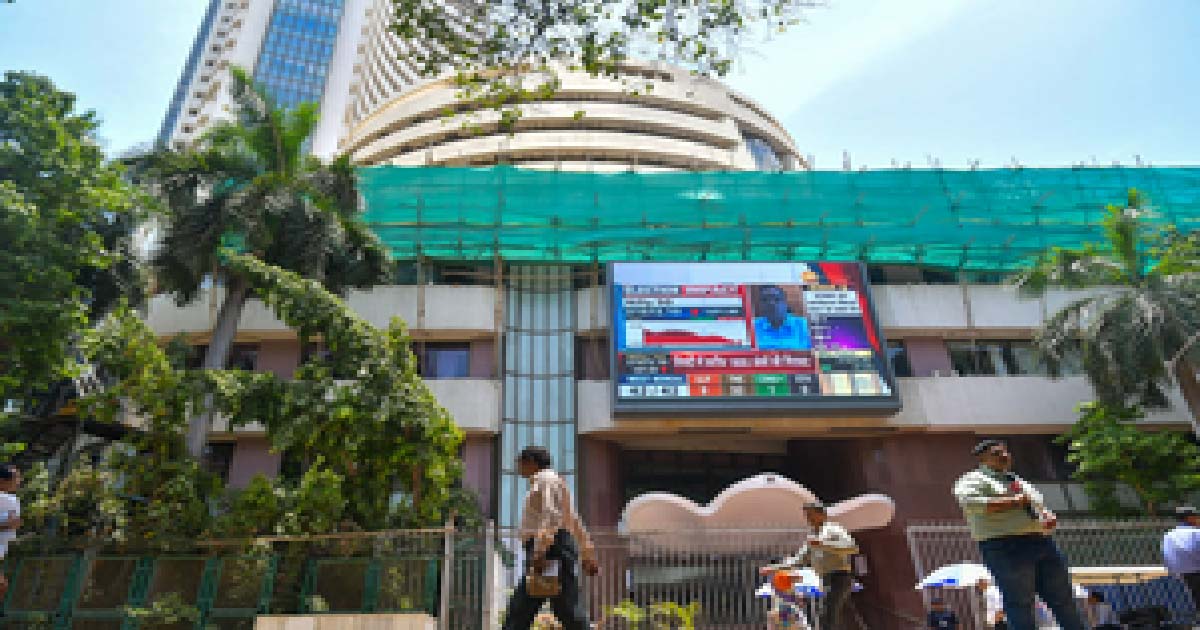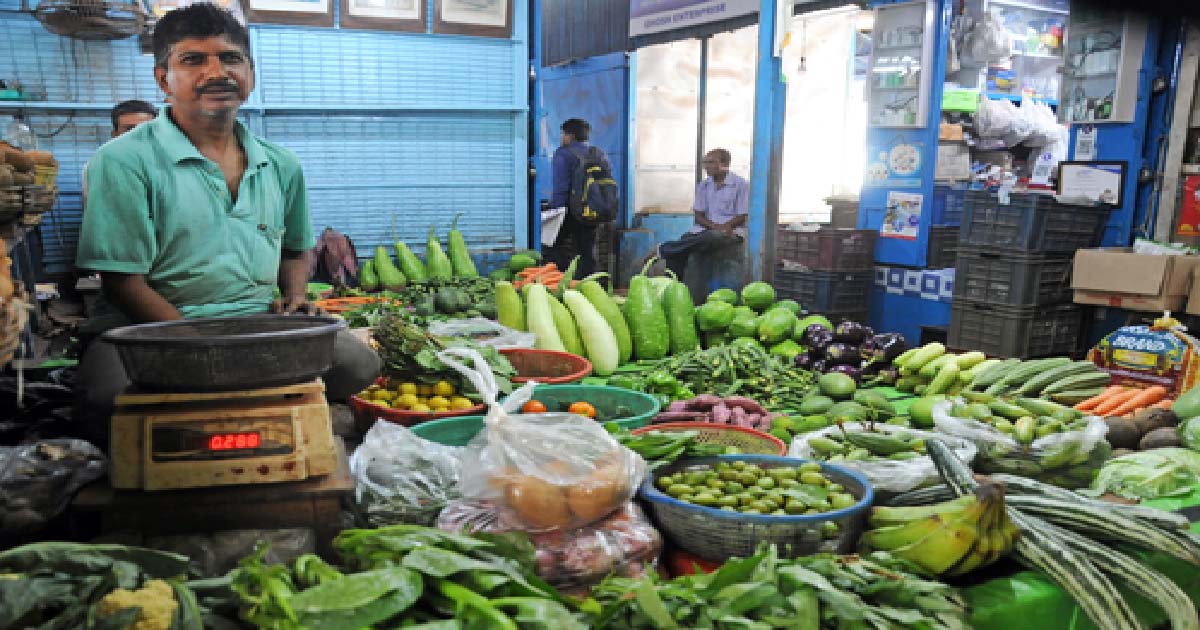Business
As capital becomes expensive, startup funding takes a hit

When capital was free, the best performing companies were capital consumptive. As capital has gotten expensive, these have become the worst performing companies, global private equity fund, Sequoia said in a recent meet with the community of founders.
As interest rates rise, valuations of cash guzzling companies and startups are being hammered and funding is drying up globally, and in India.
VC/start-up investments in India in April 2022 declined by 50 per cent year-on-year to $1.6 billion across 82 deals, according to the IVCA-EY monthly PE/VC roundup.
Vivek Soni, Partner and National Leader Private Equity Services, EY said the US Fed has started tightening monetary policy with a 50 bps interest rate hike and business risk premium/discount rates have gone up globally, which has had a significant negative impact on valuations of listed loss-making but growth-oriented start-ups. This is expected to have a spillover effect on the private capital side as well. Both start-up valuations and deal closures could see some slowdown in the coming few months.
According to the IVCA-EY monthly PE/VC roundup, April 2022 recorded investments worth $5.5 billion across 117 deals, including 16 large deals worth $4 billion. Exits recorded $1.2 billion across 13 deals, including six open market exits worth $483 million and one buyback worth $330 million.
Soni said April 2022 recorded US$5.5 billion in PE/VC investments, 27 per cent lower than April 2021 and 11 per cent higher than March 2022. Growth investments were back at the top after nine months with more than 2x growth y-o-y while monthly start-up investments recorded a 50 per cent y-o-y decline.
“The best performing assets ‘when rate expectations were falling – including technology, biotechnology, and recent IPOs- have been the worst performing assets. Simply put, the world is reassessing how business models fare in a world where capital has a cost and reconsidering how much credit to give companies for profits many years into the future”, Sequoia said.
“We are experiencing the 3rd largest Nasdaq drawdown in 20 years. It’s been an incredibly volatile last 6 months in the tech market. While it’s not quite 2001 or 2008, the Nasdaq is down 28 per cent since last November”, it added.
Sixty one per cent of all software, internet and fintech companies are trading below pre-pandemic 2020 prices. They’ve lost more than two years of stock price appreciation That’s despite many of these companies more than doubling both revenue and profitability.
One third are trading below COVID lows, when uncertainty and fear was peaking. Even more sobering, nearly one-third of these companies not only trade below their pre-pandemic stock prices, but they are now trading below the bottoms reached during March 2020 at the height of the COVID-19 pandemic.
The market is now pricing in lower values for many stocks than in March 2020 at the time of peak uncertainty. The market bounced back quickly from those lows with the help of an unprecedented combination of monetary and fiscal policy. Now with both those tools being withdrawn and moving from tailwinds to headwinds, the market is clearly indicating that the valuation framework over the last two years is no longer relevant with the removal of free money, Sequoia said.
It added that growth at all costs is no longer being rewarded. The era of being rewarded for hypergrowth at any costs is quickly coming to an end. EV/Revenue multiples across software have been cut in half over the last 6 months and now trade below the 10-year average.
Growth-adjusted multiples have fallen even further and are well below the 10-year average and pushing the 10-year lows. With the macro uncertainty around inflation, interest rates, and war, investors are looking for companies that can produce near-term certainty. Capital is becoming more expensive while the macro is becoming less certain, leading to investors de-prioritizing and paying up less for growth, Sequoia said.
The focus is shifting to companies with profitability. The focus on near-term momentum is often shifting toward companies Who can demonstrate current profitability. While the Nasdaq is down, Morgan Stanley’s unprofitable tech index is down 64 per cent. With the cost of capital (both debt and equity) rising, the market is signaling a strong preference for companies who can generate cash today, Sequoia said.
Cheap capital is not coming to the rescue. Unlike prior periods, sources of cheap capital are not coming to save the day. Crossover hedge funds, which have been very active in private investing over the last few years and have been one of the lowest cost sources of capital, are tending to wounds in their public portfolios which have been hit hard, Sequoia said.
Many don’t even have the capacity to invest, as the drawdown in their public portfolios has created an imbalance in their hybrid funds where their private investments (which have not been as dramatically marked down) represent more than the maximum private capacity within their funds, Sequoia said.
Shivam Bajaj, Founder & CEO, Avener Capital said alarmingly for the Startup ecosystem, private equity and venture capital investments declined by 25 per cent-30 per cent M-o-M in April 2022. Additionally, glorified startups including Nykaa, Zomato and Paytm continue to erode investor wealth by trading at approximately less than 50 per cent of their listing prices. With more than 6000 employees laid off in 2022 YTD by Indian Startups, capital providers might prefer delaying their plans to deploy their dry powder in expectations of future turnarounds in the industry. However, on the upside, asset-light business models built upon the pillars of consistent revenue generation, which deliver reasonable margins to investors instead of demanding rigorous burn rates, might potentially draw investor interest.
Siddharth Mehta, Founder & CIO, Bay Capital said the easy money policy of the Federal Reserve following the Global Financial crisis and accelerated in many ways at the onset of the pandemic had led to the excess liquidity getting funnelled into financial assets with increased speculative activity in such assets such as crypto currencies and NFT’s, over the last couple of years.
“India has been an equal beneficiary of this liquidity and now with the Fed being behind the curve in addressing inflation concerns and the extraction of liquidity with increased interest rates, it is definitely going to have a knock on effect on funding for early stage and late stage businesses as well”, Mehta said.
“Our view is that incremental capital will be allocated far better; investors will become far more discerning as they should have been; funding cycles will get more drawn out and diligence will be more robust and there will be far greater focus on profitability paths of these businesses. Its also likely that in some instances there will be consolidation and unfortunately mortality as well. The price damage in the public markets has still not fully cascaded down the stage curve and will happen very rapidly now. While this will have a negative impact in the near term, it is our view that over the long term, this will have positive effects as stronger businesses with robust business models, clear paths to profitability, scale and with clear differentiation will come out to be outsized winners”, he said.
Ravindra Bandhakhavi, Partner & Head-Private Equity, Cyril Amarchand Mangaldas says, “The global economic conditions are definitely impacting the funding environment for startups. There is much more emphasis on a proper diligence and a more robust corporate governance framework. Investors are also able to negotiate better rights as companies and startups are keener to have deep pocketed investors backing them at this point. Investors lastly are much focused on a path to profitability than they were before. Overall the more successful startups will still be able to raise funding while others will suffer potentially creating greater M&A opportunities in this space as well this year.”
Business
Indian stock market ends in bullish tone over hopes of renewed FII inflows

Mumbai, Dec 13: Indian equity benchmarks made marginal losses during the week amid sustained FII outflows and uncertainty surrounding the US-India trade negotiations.
However, the market ended the week in a bullish tone with Nifty surging 0.57 per cent on the last trading day after the US Federal Reserve announced a 25-bps rate cut.
Benchmark indices Nifty and Sensex dipped 0.36 and 0.17 per cent during the week to close at 26,046 and 85,267, respectively.
Indian equities opened the week on a subdued note, amid continued rupee depreciation and negative global cues due to rising Japanese bond yields.
The US Fed rate cut later in the week eased liquidity concerns and fuelled hopes of renewed FII inflows. With supportive central bank policies, steady domestic investments, and optimism over trade progress despite unclear timelines, benchmarks closed the week on a strong note.
India’s year-on-year inflation rate based on the Consumer Price Index (CPI) was estimated at 0.71 per cent for November this year which was marginally higher than the 0.25 per cent in October, according to figures released by the Ministry of Statistics.
Broader indices underperformed, with the Nifty Midcap100 and Smallcap100 down 0.51 per cent and 0.67 per cent, respectively, in a week.
Sectoral performance was mixed, with IT under pressure while PSU banks, real estate and consumer durables witnessed selective buying.
Hrishikesh Yedve, AVP Technical and Derivative Research, Asit C. Mehta Investment Interrmediates, said that Nifty’s weekly chart shows buying interest at lower levels.
Nifty has 26,200 and 26,325 as stiff resistance levels while 25,700 will act as support zone, he added.
Analysts said that markets will likely remain positive in near future but sensitive to rupee stability, FII flow trends, trade agreement clarity, and cues from major central banks abroad.
Amidst risks from currency fluctuations and global trade uncertainties, improving earnings visibility and liquidity support provide a constructive backdrop and downside protection, they added.
Business
Maharashtra on path to becoming GCC hub: CM Fadnavis

Nagpur, Dec 12: Chief Minister Devendra Fadnavis on Friday announced that a crucial milestone has been achieved in the journey to establish Maharashtra as a GCC (Global Capability Centre) Hub.
He said that the Brookfield company is set to build Asia’s largest Global Capability Centre (GCC) in Mumbai, spanning approximately 2 million square feet.
The Chief Minister said that this project is expected to generate a total of 45,000 jobs, including 15,000 direct and 30,000 indirect jobs.
He stated that due to the state’s talent pool, infrastructure, and industry-friendly environment, Maharashtra is becoming a preferred destination for Global Capability Centres.
“The new GCC policy will lead to large-scale skill-based job creation and economic growth,” he added.
He also mentioned that FedEx, a global leader in the logistics sector, is keen to invest in its GCC and other operations near the Mumbai-Navi Mumbai airport area, said the government release.
The Chief Minister informed that he requested Microsoft to consider Maharashtra for their investments, noting that their largest existing investment is already in the state.
He expressed confidence that Microsoft will make a major investment in the future and take the lead in making Maharashtra an Artificial Intelligence (AI) centre.
The Chief Minister said that Maharashtra’s model for crime control with the help of Artificial Intelligence is a guiding light for the entire country.
Chief Minister Fadnavis confirmed that Microsoft has assured priority to Maharashtra in their largest ever investment in India, amounting to $17 billion.
He further highlighted the ‘Marble’ platform developed by Maharashtra, which helps detect cyber and financial crimes in just 24 hours instead of 3-4 months.
He said that this has resulted in saving people’s money and has expedited the process of tracking criminals.
Business
India’s CPI inflation estimated at 0.71 pc for Nov, food inflation stays in negative zone

New Delhi, Dec 12: India’s year-on-year inflation rate, based on the Consumer Price Index (CPI), was estimated at 0.71 per cent for November this year which was marginally higher than the 0.25 per cent in October, according to figures released by the Ministry of Statistics on Friday.
Food inflation stayed in the negative zone during November at (-) 3.91 per cent as prices of food goods fell compared to the same month of the previous year. Food inflation has now stayed negative for the sixth month in a row, easing the burden on household budgets.
However, the increase in headline inflation during November 2025 is mainly attributed to an increase in the inflation of vegetables, eggs, meat and fish, spices, and fuels compared to October, according to an official statement.
The retail inflation had eased further in October, after having plummeted to an over 8-year low of 1.54 per cent in September, as prices of food items and goods across sectors fell during the month.
The declining trend in food prices continued in October as food inflation fell deeper in the negative zone at (-) 5.02 per cent from (-) 2.28 per cent in September.
However, the overall outlook for inflation remains benign.
The RBI’s monetary policy committee (MPC) last week slashed its forecast for India’s inflation rate for the financial year 2025-26 to 2 per cent from 2.6 per cent predicted in October due to the sharp decline in food prices and the GST rate cuts playing out.
RBI Governor Sanjay Malhotra announced a reduction in the repo rate by 25 basis points to 5.25 per cent from 5.5 per cent earlier, as inflation had come down and the monetary policy could focus on boosting growth.
Malhotra said that the surge in economic growth to 8.2 per cent in the second quarter of the current financial year and the sharp decline in inflation to 1.7 per cent had provided a rare “Goldilocks period” for the Indian economy.
“The MPC noted that headline inflation has eased significantly and is likely to be softer than the earlier projections, primarily on account of the exceptionally benign food prices. Reflecting these favourable conditions, the projections for average headline inflation in 2025-26 and Q1:2026-27 have been further revised downwards.”
Malhotra also pointed out that core inflation (which excludes food and fuel) remained largely contained in September-October, despite continued price pressures exerted by precious metals. Excluding gold, core inflation moderated to 2.6 per cent in October. Overall, the decline in inflation has become more generalised, he added.
The RBI Governor observed that food supply prospects have improved on the back of higher kharif production, healthy rabi sowing, adequate reservoir levels and conducive soil moisture. Barring some metals, international commodity prices are likely to moderate going forward.
-

 Crime3 years ago
Crime3 years agoClass 10 student jumps to death in Jaipur
-

 Maharashtra1 year ago
Maharashtra1 year agoMumbai Local Train Update: Central Railway’s New Timetable Comes Into Effect; Check Full List Of Revised Timings & Stations
-

 Maharashtra1 year ago
Maharashtra1 year agoMumbai To Go Toll-Free Tonight! Maharashtra Govt Announces Complete Toll Waiver For Light Motor Vehicles At All 5 Entry Points Of City
-

 Maharashtra1 year ago
Maharashtra1 year agoFalse photo of Imtiaz Jaleel’s rally, exposing the fooling conspiracy
-

 National News1 year ago
National News1 year agoMinistry of Railways rolls out Special Drive 4.0 with focus on digitisation, cleanliness, inclusiveness and grievance redressal
-

 Maharashtra1 year ago
Maharashtra1 year agoMaharashtra Elections 2024: Mumbai Metro & BEST Services Extended Till Midnight On Voting Day
-

 National News1 year ago
National News1 year agoJ&K: 4 Jawans Killed, 28 Injured After Bus Carrying BSF Personnel For Poll Duty Falls Into Gorge In Budgam; Terrifying Visuals Surface
-

 Crime1 year ago
Crime1 year agoBaba Siddique Murder: Mumbai Police Unable To Get Lawrence Bishnoi Custody Due To Home Ministry Order, Says Report












